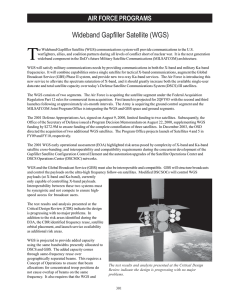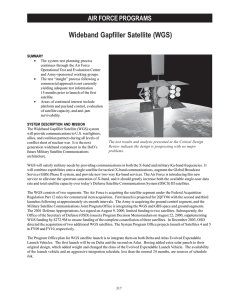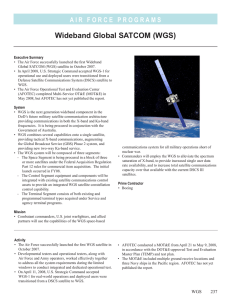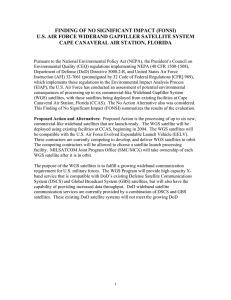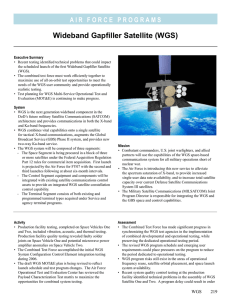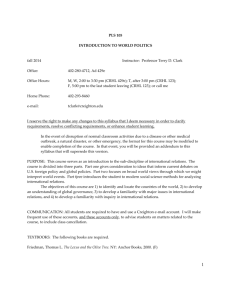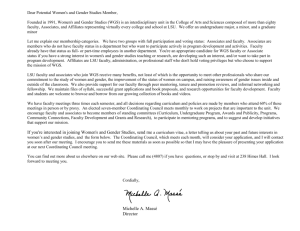talking paper
advertisement
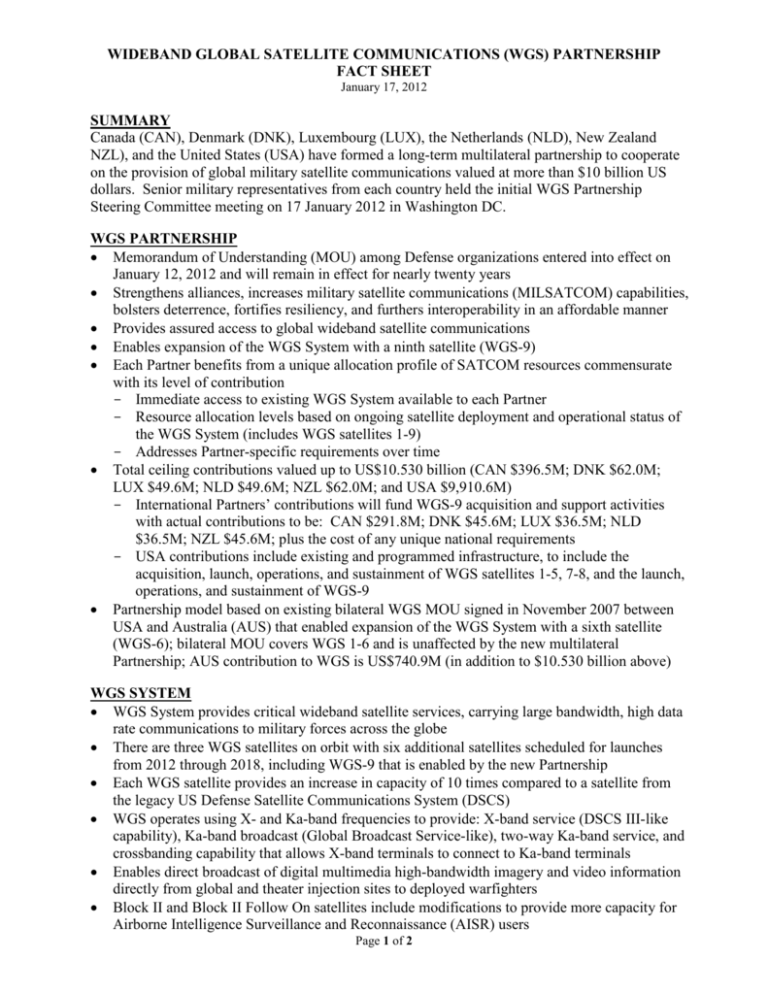
WIDEBAND GLOBAL SATELLITE COMMUNICATIONS (WGS) PARTNERSHIP FACT SHEET January 17, 2012 SUMMARY Canada (CAN), Denmark (DNK), Luxembourg (LUX), the Netherlands (NLD), New Zealand NZL), and the United States (USA) have formed a long-term multilateral partnership to cooperate on the provision of global military satellite communications valued at more than $10 billion US dollars. Senior military representatives from each country held the initial WGS Partnership Steering Committee meeting on 17 January 2012 in Washington DC. WGS PARTNERSHIP • Memorandum of Understanding (MOU) among Defense organizations entered into effect on January 12, 2012 and will remain in effect for nearly twenty years • Strengthens alliances, increases military satellite communications (MILSATCOM) capabilities, bolsters deterrence, fortifies resiliency, and furthers interoperability in an affordable manner • Provides assured access to global wideband satellite communications • Enables expansion of the WGS System with a ninth satellite (WGS-9) • Each Partner benefits from a unique allocation profile of SATCOM resources commensurate with its level of contribution - Immediate access to existing WGS System available to each Partner - Resource allocation levels based on ongoing satellite deployment and operational status of the WGS System (includes WGS satellites 1-9) - Addresses Partner-specific requirements over time • Total ceiling contributions valued up to US$10.530 billion (CAN $396.5M; DNK $62.0M; LUX $49.6M; NLD $49.6M; NZL $62.0M; and USA $9,910.6M) - International Partners’ contributions will fund WGS-9 acquisition and support activities with actual contributions to be: CAN $291.8M; DNK $45.6M; LUX $36.5M; NLD $36.5M; NZL $45.6M; plus the cost of any unique national requirements - USA contributions include existing and programmed infrastructure, to include the acquisition, launch, operations, and sustainment of WGS satellites 1-5, 7-8, and the launch, operations, and sustainment of WGS-9 • Partnership model based on existing bilateral WGS MOU signed in November 2007 between USA and Australia (AUS) that enabled expansion of the WGS System with a sixth satellite (WGS-6); bilateral MOU covers WGS 1-6 and is unaffected by the new multilateral Partnership; AUS contribution to WGS is US$740.9M (in addition to $10.530 billion above) WGS SYSTEM • WGS System provides critical wideband satellite services, carrying large bandwidth, high data rate communications to military forces across the globe • There are three WGS satellites on orbit with six additional satellites scheduled for launches from 2012 through 2018, including WGS-9 that is enabled by the new Partnership • Each WGS satellite provides an increase in capacity of 10 times compared to a satellite from the legacy US Defense Satellite Communications System (DSCS) • WGS operates using X- and Ka-band frequencies to provide: X-band service (DSCS III-like capability), Ka-band broadcast (Global Broadcast Service-like), two-way Ka-band service, and crossbanding capability that allows X-band terminals to connect to Ka-band terminals • Enables direct broadcast of digital multimedia high-bandwidth imagery and video information directly from global and theater injection sites to deployed warfighters • Block II and Block II Follow On satellites include modifications to provide more capacity for Airborne Intelligence Surveillance and Reconnaissance (AISR) users Page 1 of 2 WIDEBAND GLOBAL SATELLITE COMMUNICATIONS (WGS) PARTNERSHIP FACT SHEET January 17, 2012 PROGRAM STATUS • Boeing is the primary contractor to the US Air Force for WGS satellites • Three Blocks of WGS satellites are based on Boeing’s commercial “702” design spacecraft: Block I (WGS 1-3), Block II (WGS 4-6), and Block II Follow On (WGS 7-9) • Block I satellites are operational; WGS-1 supports Pacific region, WGS-2 supports Middle East region, and WGS-3 supports European region • Initial Operational Capability (IOC) declared 26 January 2009 • WGS-3 launched 5 December 2009; handover for operations by US Strategic Command successfully completed June 2010 • WGS-4 (Block II) launch planned for 19 January 12 • Block II Follow On contract awarded 30 August 2011 for WGS-7 full procurement, WGS-8 advanced procurement, and options for WGS-8 and WGS-9 full procurements • Contract option for WGS-8 exercised on 16 December 2011 • Contract option for WGS-9 exercised on 13 January 2012 Page 2 of 2

